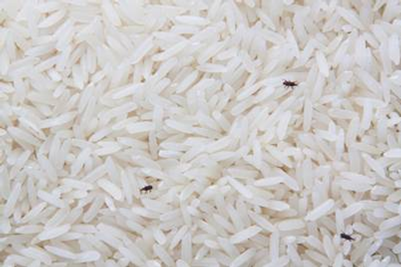Introduction
Arsenic is a heavy metal found naturally in the earth’s crust and in the environment. We have previously discussed arsenic in seafood in another article. Arsenic may also be present in rice and infant rice cereals. Consumers are advised to take a varied and balanced diet to minimise their exposure to arsenic.
This article provides more information on arsenic in rice and infant rice cereals and how you can protect your children and yourself from it.
How does arsenic get into our rice and infant rice cereals?
Arsenic can be released into the environment through natural and human activities, such as volcanic eruptions or industrial processes. Due to climate change, more arsenic is expected to be present in the environment, as more rain can release arsenic and other heavy metals that had been previously trapped in mining sites.1
As mentioned previously, heavy metals, including arsenic, enter our food when the animals and plants that we eat come into contact with water, soil and the seabed. Arsenic often contaminates food crops as it can persist and accumulate in the soil for many years, contaminating water sources which could be used for the irrigation of crops.
Rice absorbs more arsenic than other crops, such as wheat, as they often grow on flooded paddies to control weeds in rice fields. Once the crop plants take in arsenic through their roots, it will then be distributed throughout the plant, and then passed into the rice grain.
How does arsenic affect our health?
Long-term intake of high levels of arsenic may lead to health problems such as cancers and skin changes. Arsenic can be present in rice and infant rice cereals.
While these health implications may sound alarming, rest assured that the arsenic levels in our food do not pose health concerns and acute poisoning due to arsenic present in food is rare. As a precautionary measure, the permitted level of arsenic in food is set as low as reasonably possible through currently available food production/processing technologies and best practices in Singapore to safeguard and protect babies’ health.
What does SFA do to ensure rice and infant rice cereals are safe to eat?
As arsenic is found in the environment around us, it is not possible to remove it completely from our food. Nevertheless, to minimise the food safety risks and safeguard consumers’ health, the maximum limits of arsenic in rice and infant rice cereal are set as low as possible and consistent with international standards, where available.
In addition, SFA adopts a science-based risk assessment and management approach that is consistent with international standards. SFA has in place a food safety regime that involves testing of food products sold in Singapore to ensure they meet our regulatory requirements, including whether the maximum limit for arsenic is exceeded. Food that is not compliant with SFA’s food safety standards will not be allowed for sale in Singapore.
When a breach of food safety or requirements in food products is detected, SFA will conduct a thorough investigation on the implicated food product. The implicated products may also be recalled as a precautionary measure.
What can we do to reduce exposure to arsenic in rice and infant rice cereals?
Food safety is a joint responsibility shared between the Government, industry and consumers.
Industry can play their part by maintaining high food safety standards by complying with SFA’s requirements. Food importers and food processing companies should also maintain good records of their sources and suppliers to ensure traceability.
Consumers can follow these tips to reduce exposure to arsenic:
Eat a balanced diet that contains a wide variety of grains, fruits and vegetables.
Parents can offer a variety of food to their infants and consider introducing oatmeal or multigrain cereals other than rice-based cereals.
Wash rice before cooking to reduce the arsenic concentration or cook rice with large amounts of water and then discard the excess water.
Purchase food products from reputable retailers.





